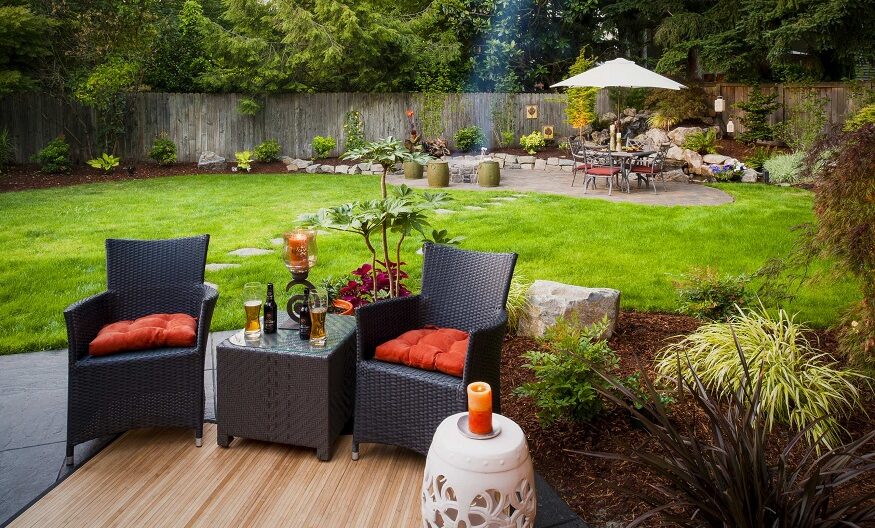
Hydropressed concrete pavers are a popular option for sidewalks, stepping stones, pedestals, etc. There are providers with leading solutions specializing in HydraPressed concrete paving slabs. They are made with a compressive strength of 8000 PSI, have a surface similar to natural stone, and weigh up to 580 container vans!
Interlocking pavers
Interlocking concrete pavers are a great way to create a durable and beautiful surface for your outdoor space. Unlike asphalt and concrete, interlocking pavers are designed to resist shifting. Here are some helpful tips to get you started. First, decide what kind of surface you want for your home. For example, using asphalt or concrete may be acceptable for driveways. Still, if you’re going to make your walkway or patio look more appealing, interlocking concrete pavers may be a better option.
Another essential benefit of interlocking concrete pavers is their durability. They are much stronger than concrete and can support four times the weight. As a result, you don’t need to worry about erosion and a strained municipal sewer system. Because they are durable, interlocking concrete pavers are much easier to maintain and repair than concrete or asphalt. In addition, they resist deterioration caused by freeze-uniting salts better than either asphalt or ordinary poured-in-place concrete.
Architectural slab pavers
Consider a few things if you’re considering installing concrete pavers in your yard. First of all, hydrapressed concrete pavers are made of a wetter type of concrete. That means they are more porous than regular concrete, and they can be easily stained to match your home’s colors or design. Concrete pavers also come in a wide range of shapes and colors, so you can be sure to find one that matches the style of your home perfectly.
Unlike clay or natural stones, hydrapressed concrete pavers are easier to install when certified professionals do the job. Although concrete is relatively easy to handle, it does require special knowledge and experience to avoid problems. For example, proper handling is critical for preventing concrete from curing. In addition, concrete is a different material than mortar and does not bond like mortar. Therefore, you need to avoid using this type of paver for vehicular applications.
Fired-clay pavers
The most apparent difference between fire-clay and hydrapressed concrete pavers is their strength. Fired-clay pavers have compressive forces of up to 25,000 pounds per square inch, while concrete pavers are slightly less. This is because the concrete pavers are dry-cured instead of firing. Therefore, they don’t need an additional firing as clay pavers do. Also, these pavers are far more durable than their clay counterparts.
Both concrete and clay brick pavers come in various colors and designs. They can be custom ordered in colors ranging from warm to cool. In addition, many concrete pavers are available in built-in protectants. Another benefit of concrete pavers is their uniformity. This means mixing and matching colors with any design you desire. Because they are manufactured in a highly controlled environment, concrete pavers are easier to cut and install.
Slab patios
Slabs and pavers are two common choices for in-ground patios and pathways, but few people are familiar with the differences between the two. Understanding the differences can be helpful when selecting a landscaper, as both have their benefits. Listed below are some reasons to use slabs and pavers. Learn more about each before deciding which option is suitable for your home. Also, keep in mind that each type of concrete paver has its benefits, so it’s imperative to ask about its pros and cons.
Slabs are typically made of individual pieces, making them less prone to cracking and deterioration. In addition, slabs can be repaired and replaced when necessary, making them an excellent choice for high-traffic areas. HydraPressed Slabs are typically intended for foot traffic, but some manufacturers offer more giant slabs to handle heavy vehicle traffic. Slabs can be installed on a mortar or sand base, and they can also be installed on pedestal systems.
Cost of installing hydrapressed concrete pavers
There are several factors to consider when selecting a paver. The most crucial factor is the balance between cost and performance. When choosing a paver, consider installation, maintenance, and lifecycle costs. Read on to learn more. There are several options available, and there is no right or wrong decision. Consider your budget when deciding which one is best for you. Inexpensive options may need more maintenance and repairs in the long run. Conversely, a higher price may provide more extended service and require less maintenance.
A professional landscaper will provide quality work at a fair price. The installation cost will vary depending on the quality of the paver and its material, and a reputable landscape contractor will provide a quote based on the project’s square footage. A licensed and insured contractor will charge you a small percentage of the total project cost for overhead and profit. Overhead and profit cover staffing, insurance, truck expenses, and warranties for the project.
